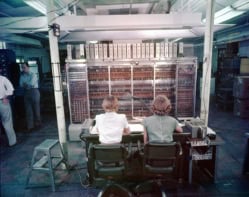Einstein’s Clocks, Poincaré’s Maps: Empires of Time
Peter Galison
2003 Sceptre/Norton 384pp £16.99/$23.95hb
Compared with other books on history of science, Peter Galison’s current offering has drawn a lot of attention in the general press. The New York Times, for example, ran a glowing two-page feature article on the book and its author. It later published a lead review. Meanwhile, some historians of physics have received Galison’s approach with an apparent cold shoulder and a bit of disdain. In conversation, for example, and off-the-record, one historian unfairly described the book as “a travesty”.
So what is all the fuss about? On the face of it, Einstein’s Clocks, Poincaré’s Maps may seem to be just another book about the historical roots of special relativity. But the plot thickens.
Recall that the origins of relativity can be traced back to the 1890s when the theorist Hendrik Lorentz – to account for problems in the optics and electrodynamics of moving bodies – hypothesized that all moving lengths contract imperceptibly as they plough through the all-pervasive but undetectable ether. He also proposed mathematical fictions called “local times”, as opposed to true time. Lorentz’s theory was further developed by the mathematician Henri Poincaré, who even argued (in a journal on metaphysics) that our common notions of time are mere conventions.
In 1905 Einstein then carried out thought experiments concerning the synchronization of ideal clocks, perhaps located on imaginary trains. Such thoughts led him to conclude that there exists no univocal simultaneity between distant events, suggesting that Lorentz’s infinitely many local times are actually true. Accordingly, objects have no one true length, moving clocks runs slow, and light waves (if waves they be) travel in a medium of nothing. The mathematician Hermann Minkowski later argued that space and time are inextricably united, and that time should be construed as a kind of fourth dimension.
These developments may seem to constitute key moments in the rise of theoretical physics – major triumphs of abstract thought and idealizations of physical relations that were carried mathematically to their imponderable consequences. Einstein emerges as part theoretical physicist, part philosopher. Alongside this perspective – rather than at its expense – Galison now advances another point of view, by analysing these historical developments from a technological perspective.
The young Einstein was not, of course, employed in the academic world but in the Swiss Patent Office. And Switzerland, as we know, was a centre of invention and innovation in clock technologies. The patent office at Bern was a clearing-house for new timing technologies, and Einstein’s job afforded him a veritable grandstand seat from which to become acquainted with new electro-technological advances.
Moreover, every day Einstein saw an abundance of public clocks on his way to and from work – on storefronts, on baroque towers, at the train station. How to synchronize such clocks was a widespread concern all over Europe and America. Engineers, scientists and businessmen needed to synchronize clocks effectively in order to solve important problems, ranging from determining longitude at sea to preventing train crashes.
Galison’s book is thus about the history of the problem of co-ordinating clocks, from the 1800s to the early 1900s. As he points out, this period was characterized by many efforts to unify, by convention, a plethora of standards of lengths and time. Geographical regions – even within a single country such as Germany – were distinguished by their own “local times”. Railway lines defined and distributed time, bringing distant times into conflict with local times. Engineers struggled to pinpoint and unite locations and times. Chronometers transported aboard ships failed to keep the time of stationary clocks. Underwater telegraphic cables were laid across the Atlantic Ocean to transmit not only messages, but also time, from observatories in Europe to Africa, Newfoundland, Brazil and beyond. Poincaré was even a member and sometime president of the French Bureau of Longitude, where he laboured to revise time-keeping conventions.
Local times, synchrony conventions, moving clocks that do not keep proper time, the diversity and unification of lengths and time. Were these remarkable coincidences? Or were there causal connections between breakthroughs in theoretical physics and prior techno-cultural developments? Galison’s narrative implies a resounding “yes”, but he cautiously avoids any outright claims of historical causation. His aim is not to reduce the emergence of relativity to such developments, but to place it in a context where the interests of engineers, physicists, philosophers, entrepreneurs and even politicians converged.
Despite Galison’s good intentions, his middle-of-the-road outlook does not counterbalance the direction of his research and the drift of his book. While claiming that special relativity emerged from physics, philosophy and technology, his book highlights the technological dimension, seemingly at the expense of the others. Readers who are not well acquainted with the roots of special relativity in optics and electrodynamics might therefore get the exaggerated impression that its crucial origins lay in the techno-culture of clock synchrony.
Be warned, moreover, that the patent offices were not the only possible source of technological imagery. Even before 1900, discussions of kinematics included references to clocks, observers, the measurement of length and time, and even trains. For example, in the 17th century, imagery of ships cruising rectilinearly served to illustrate the equivalence of physical processes on board to those on land, while by the late 19th century imagery of trains had become widespread. Such factors have to be subtracted before injecting Galison’s circumstantial findings into a general history of physics. How much weight to give to the techno-cultural aspects will now challenge historians of special relativity.
I recommend this book to readers who are interested in the history of clock synchronization or in Poincaré’s activities beyond pure mathematics. It will also appeal to people who want to see how concrete technologies, social conventions and abstract concepts combine.




